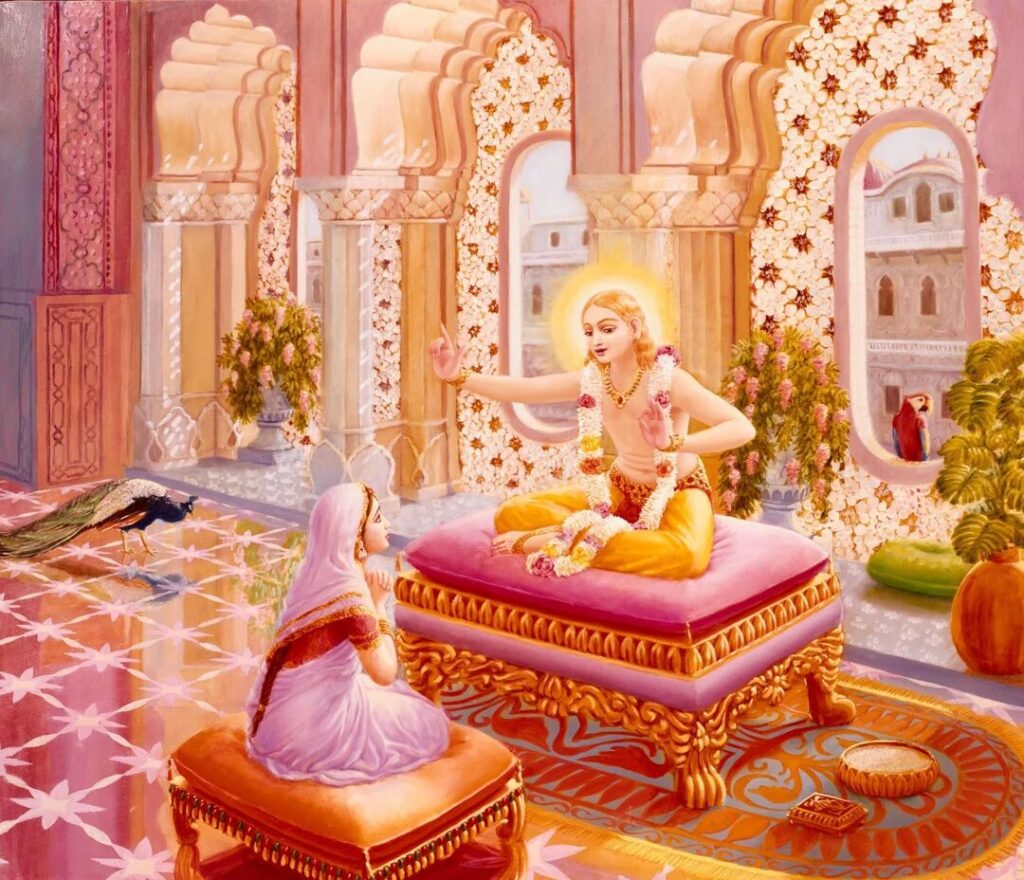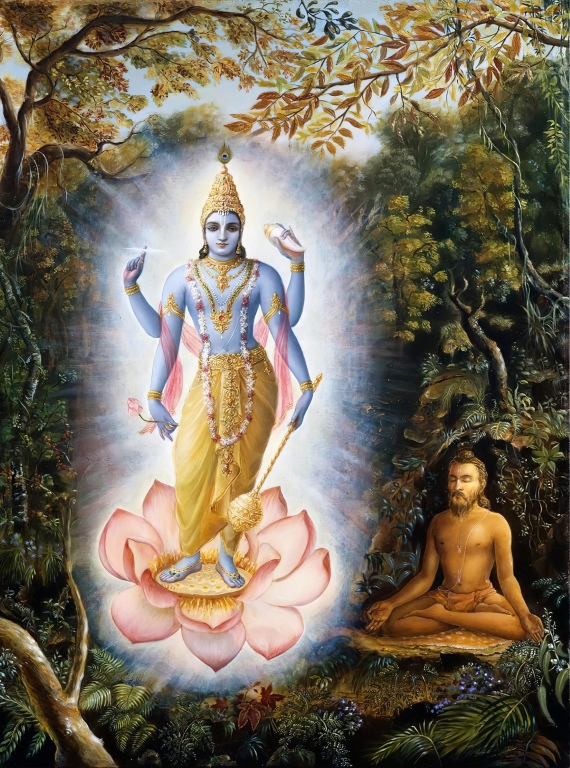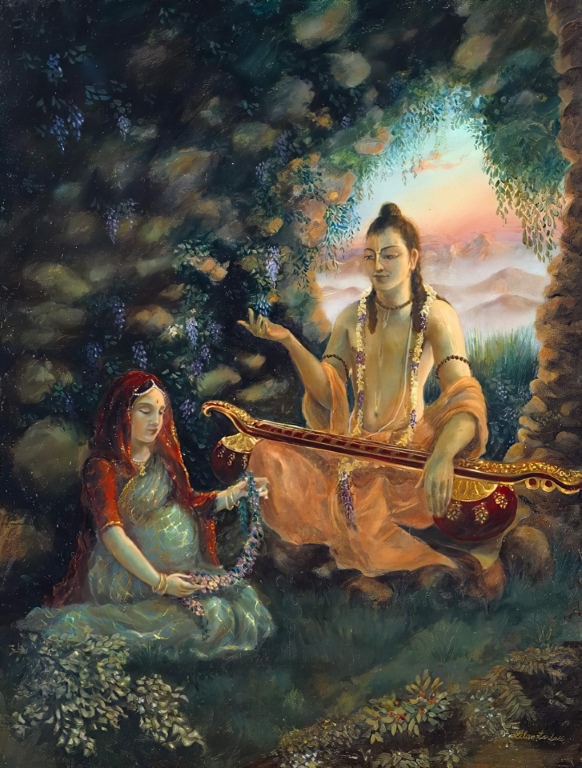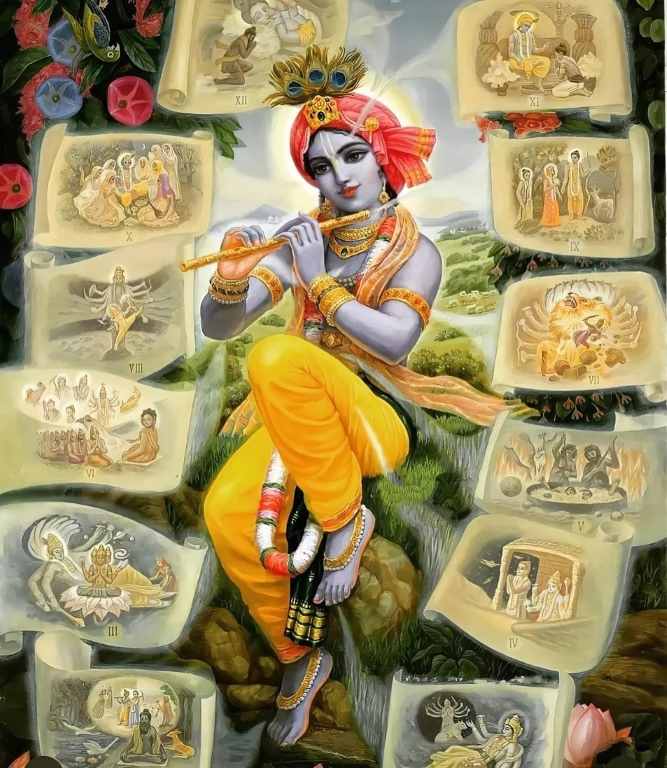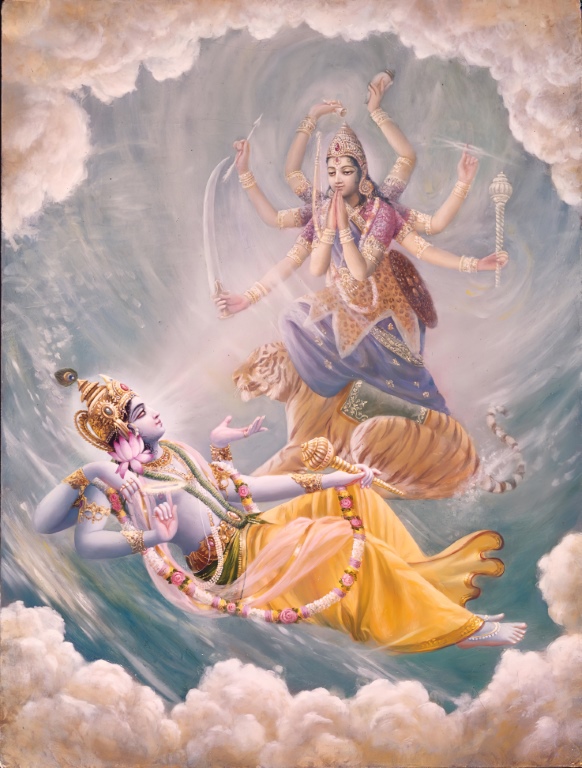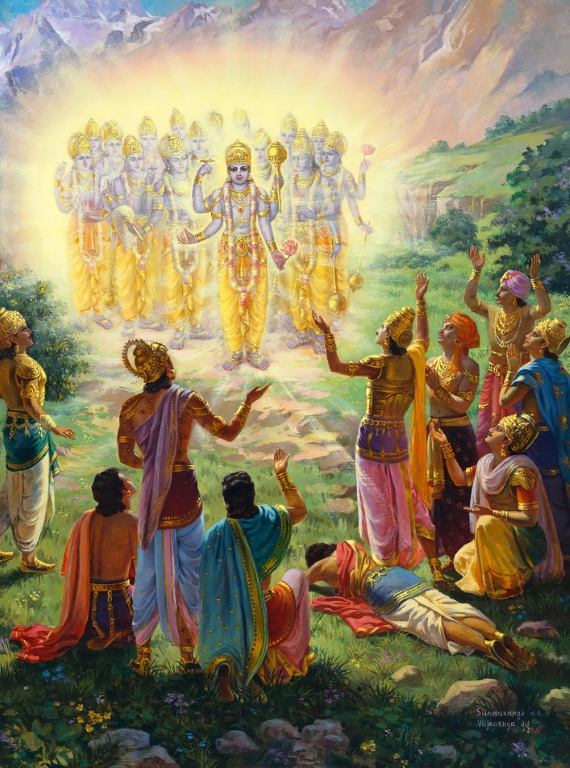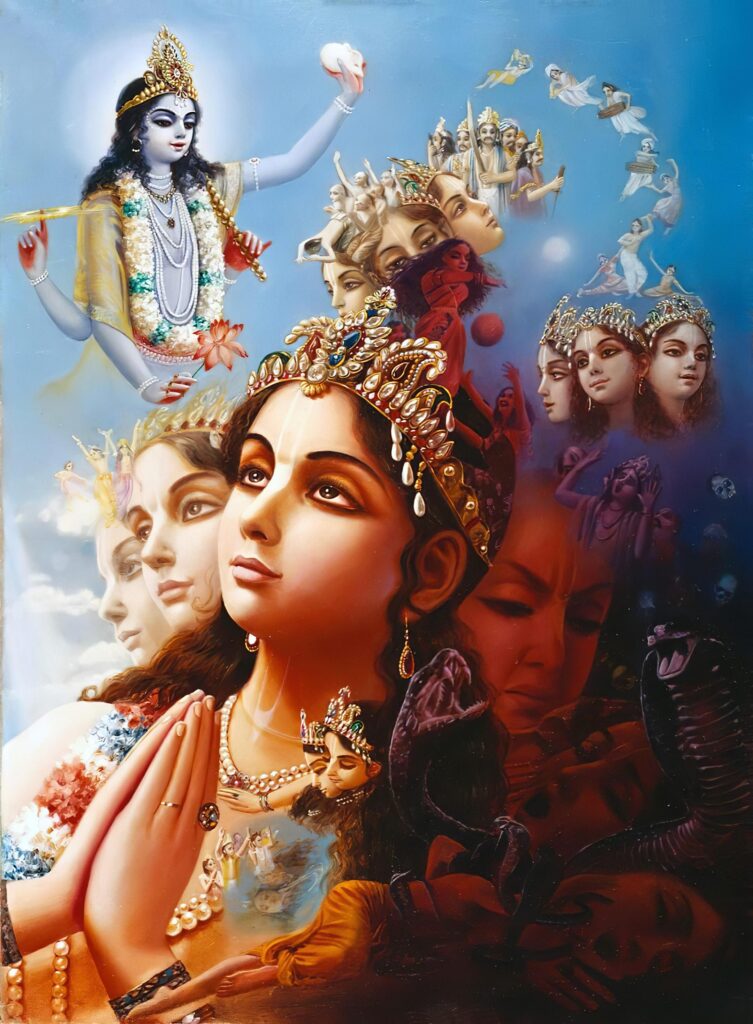in the Srimad Bhagavatam, Lord Kapila describes Yama and Niyama, the preliminary principles for the yoga process, including what to do, and what to avoid. These points are valid for all processes of self-realization. They give a solid basis from which to develop our practice. All of them are important, and many of the problems we face in our spiritual path come from failing to develop one or more of them.
“One should execute his prescribed duties to the best of his ability and avoid performing duties not allotted to him. One should be satisfied with as much gain as he achieves by the grace of the Lord, and one should worship the lotus feet of a spiritual master.
One should cease performing conventional religious practices and should be attracted to those which lead to salvation. One should eat very frugally and should always remain secluded so that he can achieve the highest perfection of life.
One should practice nonviolence and truthfulness, should avoid thieving and be satisfied with possessing as much as he needs for his maintenance. He should abstain from sex life, perform austerity, be clean, study the Vedas and worship the supreme form of the Supreme Personality of Godhead.” (SB 3.28.2-4)
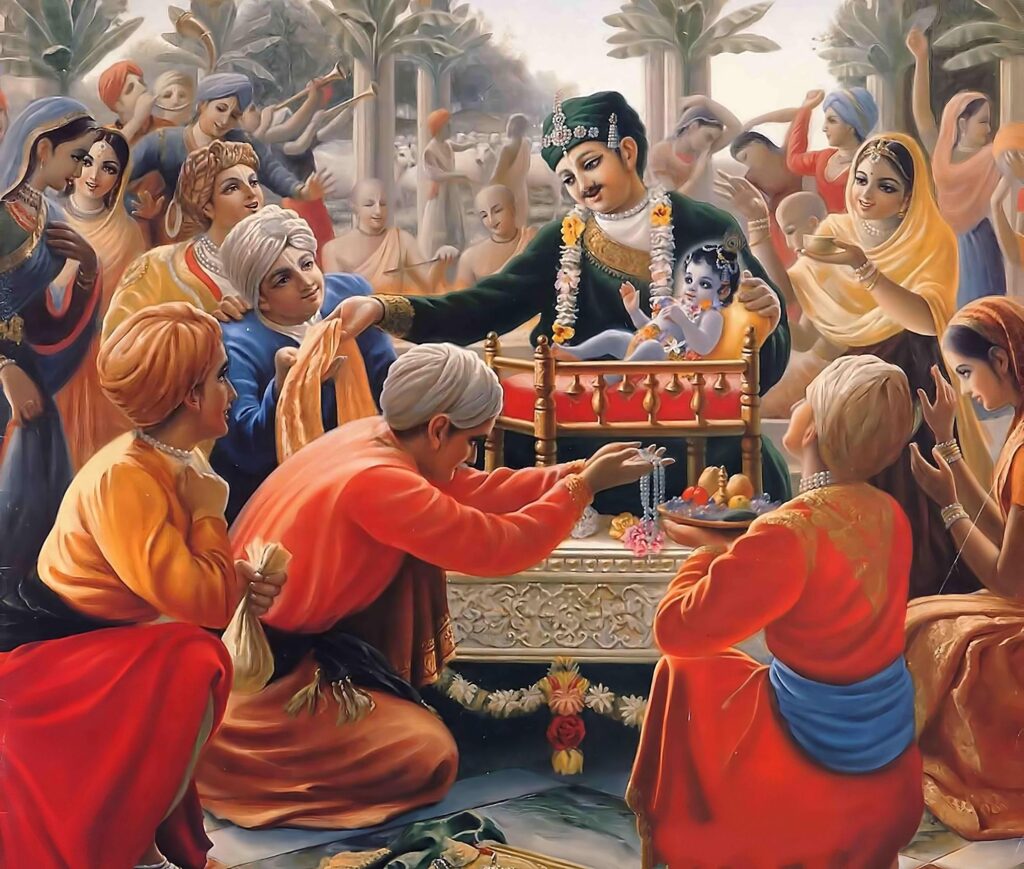
The first principle is sva-dharmācaraṇaṁ, executing one’s prescribed duties. This is a topic explained in detail in the Bhagavad-Gita. The natural division of society into four classes is naturally present in all societies, the problem is that most don’t understand the duties connected with each function. The essence of the varnasrama system is that people may be trained to properly perform their duties. This starts with basic qualities such as honesty, tolerance, being averse to fault-finding, etc., and progresses into more specific qualifications according to one’s social functions and occupation. On the other side, one should avoid performing duties that are against his nature and thus not allotted to him. A Brahmana should not fight, a Ksatriya should not try to be artificially non-violent, a Vaishya should not be artificially renounced, and so on.
Apart from these material duties, there is also the supreme duty, which is to serve the Lord. As long as one is in a material platform, one should serve the Lord while simultaneously performing his material duties, but when one becomes completely free from identification with the body, his duty becomes to just serve the Lord, although he may continue performing his material duties to give example to others. This is also well explained in the Bhagavad-Gita.
The next principle is santoṣa. One should be satisfied with what comes automatically by the grace of the Lord. Every one of us has a certain quota already allotted to us according to our previous activities. Instead of wasting our human lives trying to obtain more material facilities than what is allotted to us, we are advised to just accept whatever results come through the performance of our duties and honest work, by the grace of the Lord, and instead use our time for self-realization. It’s said that at the end of our lives, we don’t have to answer for what others do, but only for what we personally do. Other people may sensor or mock us, but we should just do what is right and not be disturbed. They will answer for their actions, and we will answer for ours.
The most important principle from the first verse, however, is ātmavic-caraṇārcanam, we should find a genuine spiritual master and surrender to him, following the process of serving and inquiring about spiritual topics. This process of approaching a spiritual master in the line of disciplic succession is the basic pre-requisite for spiritual realization. Although we have access to all the correct conclusions of the scriptures in the books of Srila Prabhupada, still we should find a spiritual master who can help us to properly understand his instructions, as he explains in his books. Without such guidance, it is easy to misunderstand.
Coming to the second verse, the next principle is grāmya-dharma-nivṛttiś, to stop the performance of mundane religious practices that have the goal of achieving material prosperity. There are many activities on this level prescribed in the karma-kanda section of the Vedas, as well as many traditional customs followed by different social groups, but they are not favorable for developing devotional service. They sometimes can work as a first step for people coming from gross materialism, but their benefit is very limited. The root of these religious performances is materialism, and when people see that there is another way to achieve things they want, they tend to abandon such religious performances and become again regular materialists. We can see that this type of religious activity is rejected right at the beginning of Srimad Bhagavatam. Instead, one should concentrate on the practice of devotional service and practices that make us free from material entanglement.
To be stable in our spiritual practice we need to ascend to the mode of goodness. From passion and ignorance is very dificult to understand what spiritual practice is, and what to say about being successful in it. To assist us in that, two principles that are very useful are mita-medhyādanam and vivikta-kṣema-sevanam.
Mita-medhyādanam means eating frugally and only pure food. At the beginning of our spiritual practice, eating a lot of prasadam is favorable, because it helps us to lose the taste for contaminated foods. However, as we advance, it becomes progressively more important to also reduce our eating to just what is needed for maintaining the body. Eating too much increases the influence of passion and ignorance, making us lethargic, diseased, and incapable of controlling our senses. On the other hand, eating little makes us active and healthy. As Prabhupada explains, the general rule is that we should eat half of what we would normally eat, and add a quarter of water, leaving the other quarter of the stomach empty. This requires a good dose of self-control, but that’s exactly the purpose of human life. The other principle, vivikta-kṣema-sevanam means to live in a secluded, peaceful place, where our spiritual practice will not be disturbed. For devotees, this means to live with other devotees who are serious in their spiritual practice. That’s the main reason Prabhupada emphasized the development of spiritual communities.
Another essential part of our spiritual realization is to be able to see all living entities as parts and parcels of the Lord. The Lord lives in every heart as Paramatma, and thus every living being is worthy of respect. Without practicing ahiṁsā, our spiritual practice will remain just an external show. The practice of non-violence is explained in more detail later in the teachings of Lord Kapila, as well as in the 11th canto.
When advised by Śukrācārya to break his word, Bali Maharaja argued “How can I behave like an ordinary cheater, especially toward a brāhmaṇa?” then he said: “There is nothing more sinful than untruthfulness. Because of this, mother earth once said, “I can bear any heavy thing except a person who is a liar.” (SB 8.20.4)
In Kali-yuga, three of the pillars of religious life (cleanliness, austerity and mercy) have already been destroyed. In this age, we are not very clean (especially internally, in terms of our thoughts and desires), we can’t perform serious austerities like people from previous ages, and we are not very merciful. Although people suffer all over the world for the lack of Krsna Consciousness, we are not very inclined to sacrifice our own comfort in order to help them. The only thing that sustains dharma in Kali-yuga is truthfulness. Because there is still some degree of truthfulness, people can still approach saintly persons and inquire about spiritual knowledge. When this truthfulness, the last pillar is broken, all is lost. Therefore, Lord Kapila prescribes satyam, truthfulness, as another essential principle for anyone interested in advancing in spiritual life.
Another principle is asteyam. It is translated as “to refrain from theft”, but Prabhupada calls our attention to the broader sense of it. Asteyam doesn’t mean just not being a thief in an ordinary sense, but avoiding becoming a thief by accumulating more than one needs or not spending one’s money for the worship of the Lord. Everything belongs to the Lord because everything is made out of His energy. If we take it and claim it to be our property, that’s theft. Instead, we should accept the principle that everything belongs to Krsna and use whatever properties we find under our care in the service of the Lord. A pure devotee may accept any amount of material resources for the service of the Lord, but he will avoid accepting more than necessary for his personal maintenance. This is the principle of īśāvāsyam idaḿ sarvaṁ discussed in the first verse of the Śrī Īśopaniṣad.
The last four principles are interconnected. One should practice brahmacaryam, which means to practice celibacy. As Prabhupada explains, it can be practiced by either completely avoiding sex life or by restricting it to sex inside the marriage according to regulations. Illicit sex life is the sinful principle that destroys cleanliness, both internal and external, therefore this is an important principle for one desiring to be serious in the spiritual practice. Cleanliness is also essential when one is engaged in worshiping the deity.
Without controlling one’s senses, it’s also very dificult to study and understand the scriptures. As Prabhupada mentions, “practicing yoga without reading the standard literatures is simply a waste of time.” Srila Bhaktivinoda Thakura classifies the three stages of spiritual advancement as sambandha, abhidheya, and prayojana. The first stage, sambandha, is based on having a proper understanding. Based on this, one can properly practice the process (abhidheya) and attain the ultimate goal (prayojana).


